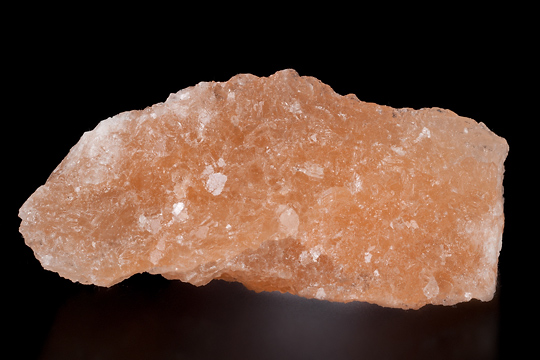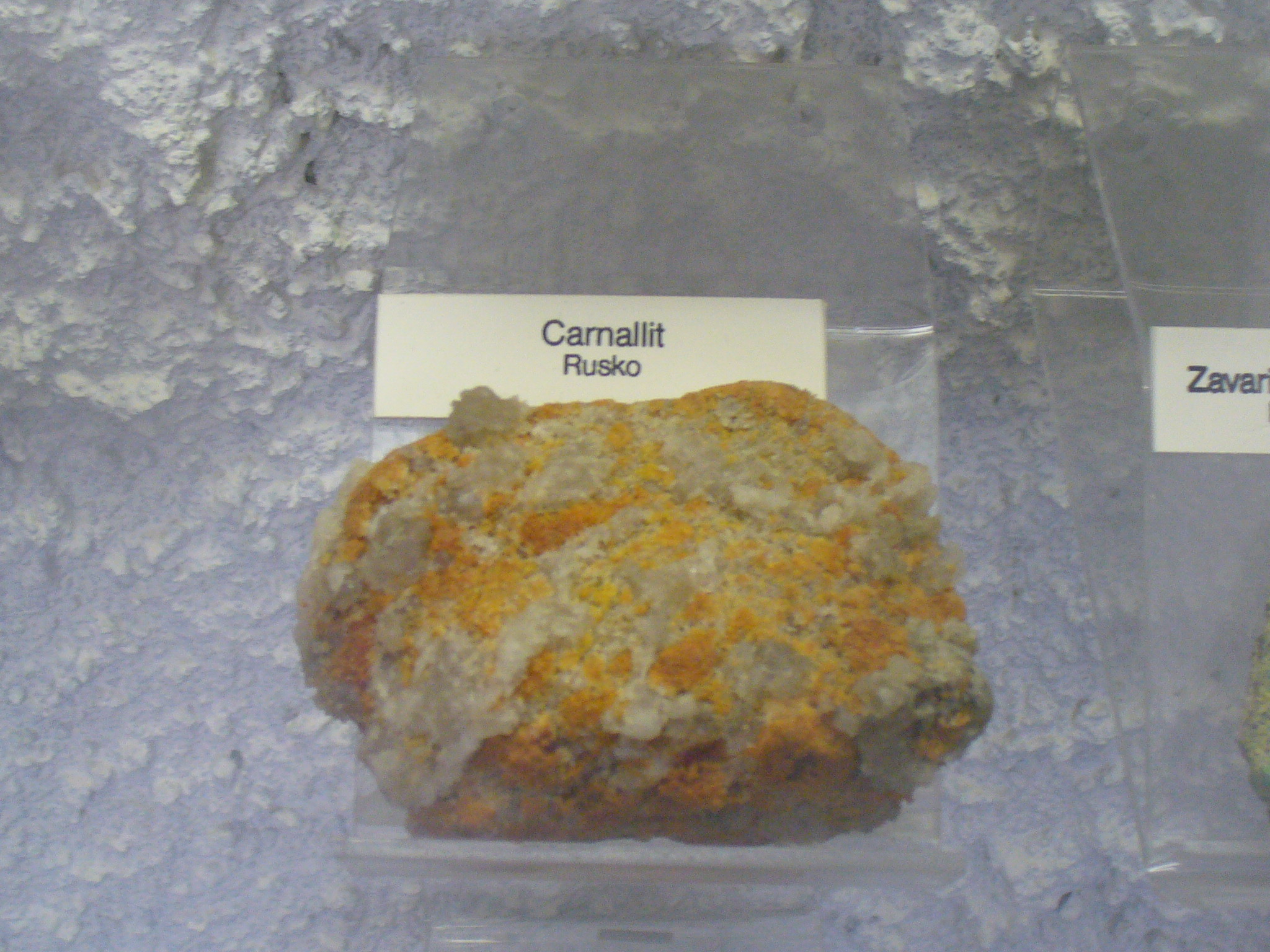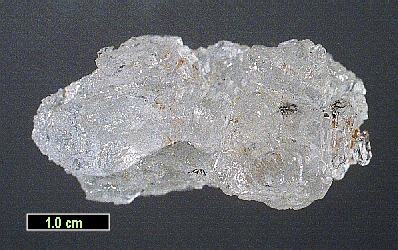Carnallite
Carnallite is a mineral from the mineral class of halides and the Department of hydrous double chlorides. It crystallizes in the orthorhombic crystal system with the chemical composition KMgCl3 • 6H2O and often developed pseudo-hexagonal, pyramidal or tabular crystals, but also granular aggregates, either colorless or white by foreign admixtures, can be yellow, red or blue.
Special Features
Carnallite is glass glitter in fresh, dry state, but becomes dull due to moisture. It is made of potassium chloride, magnesium chloride and water and traces of rubidium chloride, cesium chloride, and bromine as the bromide (up to about 300-400 ppm).
Particularly noteworthy are its strong fluorescence and its ready solubility in water and its pungent flavor. In addition, the mineral dissolves after some time on the air with precipitation of sylvite. When pressing and turning a knife or spatula tip produces a squeaking sound.
Etymology and history
Was first found and described carnallite 1856 potash district of Staßfurt in Saxony-Anhalt by Heinrich Rose ( 1795-1864 ). He named the mineral after the Prussian mining engineer Rudolf von Carnall (1804-1874)
Classification
In the now outdated but still in use 8th edition of the mineral classification by Strunz the carnallite belonged to the mineral class of " halides " and then to the Department of " Doppelhalogenide, hydrated ," where he formed a distinct group with koenenite, Redikortsevit and Tachyhydrit.
The 9th edition valid since 2001 and of the International Mineralogical Association (IMA ) used the Strunz'schen Mineral classification assigns the carnallite in the class of " halides ", there, however, in the department of the " Simple halides with H2O" one. This department is also further subdivided by the molar ratio of metal to the halogen, so that the mineral according to its composition in the subsection "M: X = 1: 3: 1 and 2" is to find where it is the only member of the unnamed group 3 forms. BA.10.
The classification of minerals according to Dana assigns the carnallite in the class of " halides ", but there in the fine already divided department of " complexes halides - aluminum fluorides ." Here he is the only member of the unnamed group 11:01:02 within the sub-division of " complexes halides - aluminum fluorides with (A) mB (X) 3" to find.
Modifications and varieties
Through abundant admixture of microscopic scales of hematite carnallite gets a reddish color.
Education and Locations
Carnallite formed by evaporation along with other potassium salts and magnesium salts as the last phase of the salt cycle. During diagenesis, it transforms into sylvite.
Worldwide, carnallite so far (as of 2009) are detected at around 100 localities. Apart from its type locality Staßfurt in Saxony -Anhalt, the mineral in Germany was still in the potash works of herring and Philippstal in the Hessian Werra, in several potash works and mines of Lower Saxony, in Röblingen am See, Bernburg (Saale ) and leeches in Saxony- Anhalt, and at Bleicherode and Bad Salzungen in Thuringia.
A well-known locality is also Carlsbad in the U.S. state of New Mexico, where up to 4 cm large crystals were revealed.
Other localities are of Entre Ríos in Bolivia; Sergipe in Brazil; Afar in Ethiopia; several localities in the Chinese province of Qinghai; Surtsey in Iceland; several localities in Sicily in Italy; New Brunswick, Quebec and Saskatchewan in Canada; in Aksai Valley in Aktobe in Kazakhstan; at Mount Ruapehu in New Zealand; Winterswijk and Veendam in the Netherlands; Inowrocław and Kłodawa in Poland; Loulé in Portugal; in the Russian regions of Eastern Siberia, Saratov Oblast and the Urals; Bages in Spain; Kalush ( Ivano- Frankivsk ) in Ukraine, Humberside and North Yorkshire (England ) in the United Kingdom and several regions of Arizona, Colorado, Michigan, New Mexico and Utah in the United States (USA).
Crystal structure
Carnallite crystallizes in the orthorhombic crystal system, space group ( Raumgruppen-Nr. 52) with the lattice parameters a = 9.55 Å, b = 16.12 Å and c = 22.47 Å, and 12 formula units per unit cell.
Use
The extraction of bromine from carnallitic liquors is now no longer as economically.
Carnallite is considered one of the most important potash and serves as a fertilizer and as a raw material for the production of magnesium. Carnallitische crude salts have higher against sylvinitischen crude salts (eg hard salt ) has the disadvantage that in the preparation strong magnesium salt containing Endlaugen arise. The alkalis can usually be disposed of only in part by compression into porous layers of rock, the rest is discharged into nearby rivers. That's why today Kalisalzlagerstätten be with sylvite ( rock from sylvite, halite, etc.) compared to carnallite ( rock from carnallite, halite, etc.) preferred. In addition, carnallite is mining much less stable than rock salt, sylvite or hard salt because he is attacked by saturated sodium chloride liquors with the formation of sylvite and magnesium- richer sodium chloride solution.










